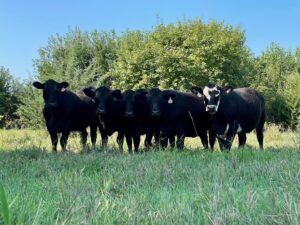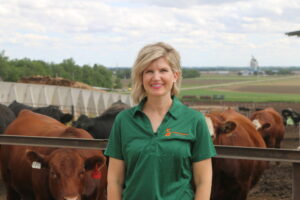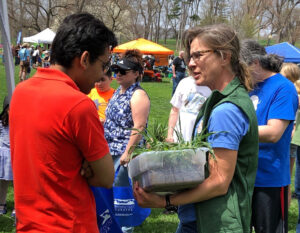Being a transplant to country life, I have learned a lot over my last few years on the farm. Each season brings a new series of events. Summers in the city consisted of the following: schools are out, kids playing, vacations, swimming at the pool, and flip-flops and tank tops.

Summer on the farm consists mostly of the same, but with some additional activities. Summer is the season of growth on the farm. I used to think that once the crops were in the ground that our job was done until harvest. We could just sit back and watch the corn grow, right? I quickly learned our crops need more than just the sun and water to grow–they need us. We work extremely hard to make sure our crops receive water. Not just any water, but pure clean rain water or ground water. We also monitor the plants’ water intake extremely closely. If it rains, we water less. If there’s a drought, we water more. Farmers, like us, are extremely precise and utilize science and technology to ensure we are being as sustainable as possible and not overusing water. We have agronomists and weather apps on our phones to monitor the rainfall to the exact centimeter at each farm and adjust our irrigating plans accordingly. We also have soil probes that allow us to conserve water and energy. These probes monitor how much moisture is in the ground.

There are some crops that do not require much additional irrigation and can sustain off the rain and soil type. However, most crops we grow in our area of the state do require irrigation. The form of irrigation used most often is a pivot that pumps groundwater up and over the crops through a sprinkler-like system. Pivots usually maneuver in a circular fashion, this is why when you are flying over fields you sometimes see green circles on the ground below. These circles are actually showing what ground is being irrigated on a square field. The pivots, like a compass inscribing an arc on a piece of paper, rotate around from a center point. A less common form of irrigation is through a pipe gravity system. These are pipes laid out on the ground and connected together, using the slight variation in elevation to allow the water to flow across the field through pre-dug trenches. This type of irrigation is the most time-consuming and irritating but is also the most cost-effective. Pipe irrigation is the most cost-effective because the initial cost of equipment is much lower than a pivot and the cost of maintenance is also lower.
Summer on the farm for me has a new meaning. It’s a season of growth. Just like our kids need vitamin D and water to grow up strong, our crops do too, and it’s our job to make sure we are doing the best job we can!




